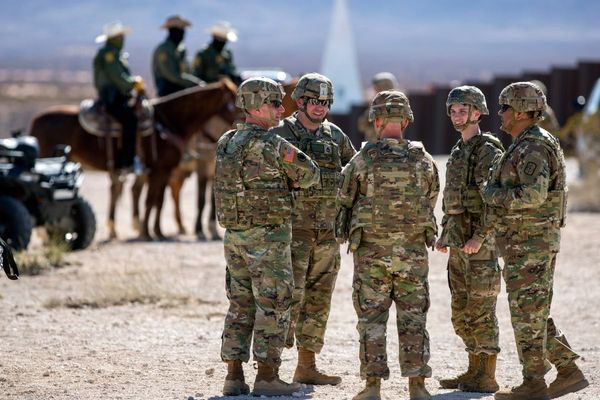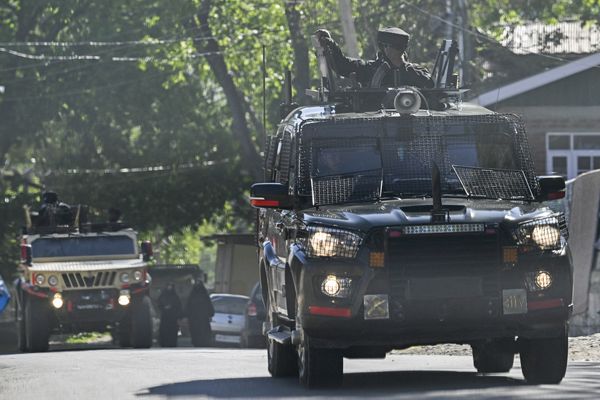
At least a dozen more people were subjected to waterboard-like tactics in CIA custody than the agency has admitted, according to a fresh accounting of the US government’s most discredited form of torture.
The CIA maintains it only subjected three detainees to waterboarding. But agency interrogators subjected at least 12 others to a similar technique, known as “water dousing”, that also created a drowning sensation or chilled a person’s body temperature – sometimes through “immersion” in water, and often without use of a board.
New lawsuits, recently released documents and the Senate’s landmark torture report indicate that at least 13 men in total experienced “water dousing”. Those familiar with their cases and an interrogator cited in the Senate report consider water dousing’s departure from waterboarding to be “a distinction without a difference”.
Water dousing, however, added an element of hypothermia. Some detainees reported their CIA captors dousing them with “cold or refrigerated” water, then wrapping them in similarly frigid sheets of plastic, keeping their temperatures low.
“CIA cable records often describe the detainees as naked after the water dousing, while other records omit such detail,” the Senatereport states.
Lawyers for some of the detainees said they were prevented by classification rules from discussing the treatment of their clients, a limitation they said helps the CIA in continuing to define waterboarding narrowly. Even beyond the dousings, there is some evidence to suggest that the CIA performed more waterboardings than it has thus far admitted.
Laura Pitter of Human Rights Watch, who has investigated torture for the group, said the CIA was being “entirely disingenuous” in claiming it only waterboarded three people.
“First, more than three people were waterboarded,” she said. “But second, the CIA used water to torture detainees in a variety of ways that cannot escape classification as torture. Whether on a board or on the floor, they induced near suffocation using water. And whether you call it ‘waterboarding’ or ‘water dousing’, that’s torture – plain and simple.”
‘A form of waterboarding’
The CIA maintains that Khalid Sheikh Mohammed, Abdel Rahim Nashiri and Abu Zubaydah are the only men it waterboarded. Mohammed was subjected to both “water dousing and additional waterboarding sessions”, according to a March 2003 CIA document cited by the Senate intelligence committee.
That official account is complicated by internal CIA documentation cited by the intelligence panel. A CIA interrogator cited by the committee said the dousing “can approach the effect of the waterboard”. Some cases, the committee found, indicate that agency interrogators even performed the dousing “on a waterboard”.
According to recently released documents and lawsuits, four detainees – Walid Bin Attash, Suleiman Abdullah Salim, Majid Khan and Gul Rahman – were not strapped to a board for dousing during their brutal interrogations. The treatment was similar enough to water boarding that for another detainee, Mohamed Ahmed Ben Soud, also known as Mohammed Shoroeiya, it was performed on a water board. A lawsuit filed this week by Ben Soud and Salim described the dousing that the two men experienced as “a form of waterboarding”.
Additionally, accounts from the Senate intelligence committee’s 2014 report indicate that another seven men – Asadullah, Mustafa al-Hasawi, Abu Hudhaifa, Abu Yasir al-Jaza’iri, Suleiman Abdullah, Abu Ja’far al-Iraqi and Abu Hazim, also known as Khalid al-Sharif – were subjected to the dousing. Khalid Sheikh Mohammed accounts for the 13th known case of water dousing.
Two interrogators stated to the CIA’s inspector general that al-Hasawi “cried out for God” as the dousing occurred. (Ben Soud, for unexplained reasons, is referred to as Abd al-Karim in the Senate report.)

McClatchy noted the discrepancy between the dousing described in the report and the agency’s waterboarding claims in December. With more information about the dousing now released, detainee attorneys cast new doubt on the depiction of relatively limited waterboarding provided by the CIA.
“I don’t know if the CIA is lying about the number of people it waterboarded,” said air force major Michael Schwartz, a military lawyer for Bin Attash, who faces a military tribunal for the 9/11 attacks. “I do know that if I were allowed to tell you about the specifics of Mr bin Attash’s torture, you would laugh the next time you heard the government try to minimize its wrongdoing by drawing a distinction between waterboarding and other forms of water torture.
“Is there a distinction for purposes of discussing victim impact? Medically, yes. Is there a distinction for purposes of discussing the lawfulness of the CIA’s conduct, and the question of accountability? No.”
A ‘shower’
Bin Attash described the role of water-based interrogation techniques to an interviewer from the International Committee of the Red Cross, according to an account leaked in 2009.
“[O]n a daily basis during the first two weeks I was made to lie on a plastic sheet placed on the floor which would then be lifted at the edges. Cold water was then poured on to my body with buckets,” Bin Attash said. “I would be kept wrapped inside the sheet with the cold water for several minutes. I would then be taken for interrogation.”
Interview notes with CIA detainee turned cooperating war-crimes tribunal witness Majid Khan, released in June, record Khan’s claim that CIA interrogators held his head repeatedly under water, causing him to believe, as with waterboarding, that he would drown. Khan claims he was suspended from a wooden beam and submerged into a tub of ice water, and also that his captors doused his nose and mouth with water and ice from a bucket.
Whether the CIA’s water-based techniques employed a board “is a distinction without a difference”, said Wells Dixon, an attorney for Khan.
“A high degree of skepticism is appropriate about what the CIA says about what happened in its torture program.”

Rahman, an Afghan, is the only detainee known to have died in CIA custody, of hypothermia. A footnote in the Senate report cites a CIA linguist, quoted in an agency inspector general study, describing Rahman’s dousing, referred to as a “shower”.
“Rahman was placed back under the cold water by the guards at [redacted CIA officer]’s direction. Rahman was so cold that he could barely utter his alias. According to [the on-site linguist], the entire process lasted no more than 20 minutes. It was intended to lower Rahman’s resistance and was not for hygienic reasons.”
Furthermore, an attorney for the youngest man formerly detained at the US military facility at Guantánamo Bay, Omar Khadr, has said Khadr was waterboarded, although Khadr was not in CIA custody and there are no confirmed cases of waterboarding at Guantánamo. Both the CIA and the Pentagon deny the allegation.
More waterboardings?
While there has been comparatively little attention paid to CIA water dousing, the few accounts that exist describe it as similar to waterboarding, and are bolstered by other non-dousing indications that waterboarding itself went further than the CIA has thus far admitted.
In a case that the Senate committee said “approximated waterboarding”, a CIA linguist told the agency inspector general that “when water dousing was used on Abu Hazim, a cloth covered Abu Hazim’s face and [redacted CIA officer] poured cold water directly on Abu Hazim’s face to disrupt his breathing. [The linguist] said that when Abu Hazim turned blue, Physician’s Assistant [redacted] removed the cloth so Abu Hazim could breathe.” The inspector general noted that he could not find evidence corroborating the claim.
According to the Senate intelligence committee’s 2014 report, an interrogator cited by the committee expressed doubts that the “water dousing” was functionally different from waterboarding.
“I have serious reservations about watering [detainees] in a prone position because if not done with care, the net effect can approach the effect of the water board. If one is held down on his back, on the table or on the floor, with water poured in his face, I think it goes beyond dousing and the effect, to the recipient, could be indistinguishable from the water board,” a CIA interrogator emailed in November 2003.
At a “black site” believed to be in Afghanistan, the Senate inquiry found, “detainees were often held down, naked, on a tarp on the floor, with the tarp pulled up around them to form a makeshift tub, while cold or refrigerated water was poured on them”. The CIA inspector general found that the dousings at the site reflected “guidance” from attorneys at the agency’s Counterterrorist Center and its Office of Medical Services.
According to a footnote in the study, no waterboarding is confirmed to have taken place at the Afghanistan site, which the Senate inquiry gave the pseudonym “Detention Site Cobalt”. Yet the Senate committee found what it describes as a “CIA photograph of a wooden waterboard” there.
“The waterboard device in the photograph is surrounded by buckets, with a bottle of unknown pink solution (filled two thirds of the way to the top) and a watering can resting on the wooden beams of waterboard. In meetings between the Committee staff and the CIA in the summer of 2013, the CIA was unable to explain the details of the photograph, to include the buckets, solution and watering can, as well as the waterboard’s presence at Detention Site Cobalt,” the footnote states.
The CIA did not ask the Justice Department for approval to use water dousing until summer 2004, two years after the torture program began. The description of the technique provided to department attorneys “made no mention of cold water immersion, which was used on CIA detainees and taught in CIA interrogator training”, according to the Senate report.
The agency’s official response to the Senate report noted that headquarters officials provided “guidance” on water dousing “as early as March 2003” and classified the dousing, “considered the most coercive of the standard interrogation techniques in use until early 2004”, after which the agency classified it as an “enhanced” technique.
The response continued: “While it is reasonable to question the propriety of the water dousing with cold water at the [redacted] facility where Gul Rahman died, likely due to hypothermia, it is important to note that the technique was employed after the first few months at [redacted] in rooms heated to a minimum of 65 degrees in order to prevent possible harm.”
CIA officials did not address questions from the Guardian as to why the agency considers the difference between waterboarding and water dousing to be substantive. CIA officials would neither confirm nor deny the Guardian’s tally of detainees subjected to water dousing.
“CIA’s 2013 response to the Senate Select Committee on Intelligence (SSCI) Study acknowledges that the program had shortcomings and the agency made mistakes,” said CIA spokesman Dean Boyd.
“The most serious problems occurred early on and stemmed from the fact that the agency was unprepared and lacked the core competencies required to undertake an unprecedented program of detaining and interrogating suspected terrorists around the world. In carrying out that program, CIA did not always live up to the high standards that we set for ourselves and that the American people expect of us. CIA has owned up to these mistakes, learned from them and taken numerous corrective actions over the years.”
• This article was amended on 16 October 2015, to clarify the CIA’s comments regarding the Guardian’s tally of detainees subjected to water dousing. It was amended again on 17 October to say that Mohamed Ahmed Ben Soud’s treatment was performed on a water board.







